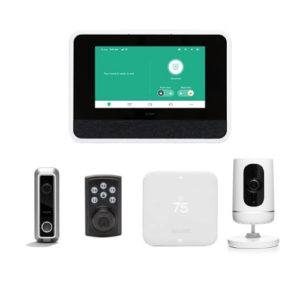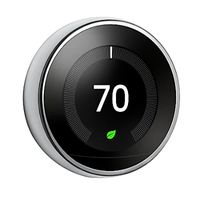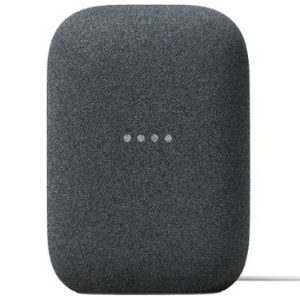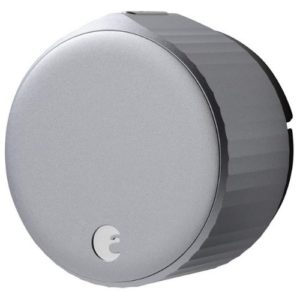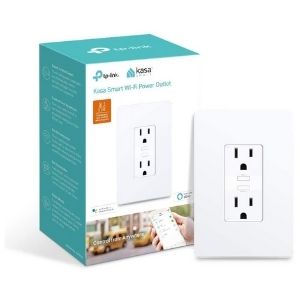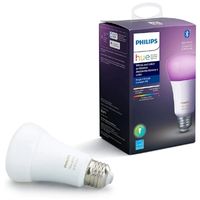Both Z-Wave and Zigbee are wireless technology used to connect smart home devices to each other and the internet. We found that Zigbee is the best choice overall.
What’s the Difference between Zigbee and Z-Wave?
SafeWise experts have years of firsthand experience testing the products we recommend. Learn how we test and review.
By signing up, you agree to our Terms and Conditions and Privacy Policy.
Zigbee pros and cons
Z-Wave pros and cons
Z-Wave vs. Zigbee: Zigbee wins
Comparing Zigbee vs. Z-Wave, Zigbee has a few features that make it the stand-out in this head-to-head comparison.
Zigbee uses a frequency that is much faster at getting data to and from your device than Z-Wave. It can also connect to more devices. Unfortunately, it can interfere with devices using Wi-Fi, and it uses more power.
Either way, though, you really can’t go wrong with either choice when setting up your smart home automation for a mesh network.
Z-Wave vs. Zigbee: How do they work?
Z-Wave and Zigbee help smart home devices communicate with each other. Smart devices need to connect to the internet to receive commands from apps and relay information. If a device is far away from the router, the signal can be weak, and the device may not get its instructions—or it may struggle to relay information back to the app.
So, many smart home devices—like the Samsung SmartThings Hub, Philips Hue, or Insteon products—use Z-Wave and Zigbee to make sure each device has a strong wireless connection through a mesh network.
Instead of sending signals directly from the wireless router to a smart home device, like with Wi-Fi, Zigbee and Z-Wave play a game of leapfrog. The radio signal will go from a smart hub to the nearest device and then “hop” to the next device (and so on) until it gets to the device that needs the information.
This means that the device gets the message loud and clear, no matter how far across your home the message has to travel. Since devices are interconnected, this type of network is called a mesh network.
Are Zigbee devices and Z-Wave devices safe?
Since the signal hops from device to device, it would seem that Z-Wave and Zigbee devices are more susceptible to hackers. Good news: These types of devices are very safe. When the signal is created, it’s encrypted, like with most Wi-Fi networks. In fact, these devices have AES-128 encryption, which financial institutions use because it’s so secure.
That sounds great, but what is encryption exactly? When data is encrypted, the signal is scrambled up and it can only be unscrambled by one of your devices. Even if a hacker did intercept the signal, they wouldn’t be able to figure out what the information means. It would just look like a lot of symbols and numbers.
Z-Wave vs. Zigbee Frequencies
Frequency impacts what devices you can pair with your Zigbee or Z-Wave mesh networks. Both types use different radio frequencies. Zigbee uses a 2.4 GHz frequency or a 915 MHz frequency, and Z-Wave uses a frequency of 908.42 MHz.
A device that uses Zigbee won’t be able to communicate with a device that uses Z-Wave and vice versa. So, if you add a mesh network to your home, you need to pick one or the other and only purchase devices that work with its frequency.
Zigbee uses a 2.4 GHz frequency or a 915 MHz frequency, and Z-Wave uses a frequency of 908.42 MHz.
Z-Wave vs. Zigbee Speed
If speed is a dealbreaker for you, Zigbee is your best bet. Z-Wave is considerably slower.
We're guessing you probably want your smart home devices to carry out commands quickly (unless you have a black belt in patience). When arriving home, you likely want to remotely unlock your front door with its smart lock app right away. When the connection speed is slow, using an actual key can be a lot faster than waiting for your smart lock to respond.
Zigbee is faster, hands down, when it uses its 2.4 GHz frequency. The problem is, you sacrifice power consumption for speed. So you may need to change the batteries in your smart devices more often. Z-Wave is less than half as fast, but at least you can wait a little longer to change out the batteries.
Smart home interference
The difference in frequencies also means a difference in how they interact with other smart home devices in your home. Zigbee’s 2.4 GHz frequency may interfere with your Wi-Fi network or your microwave, for example.
Z-Wave’s frequency, on the other hand, may interfere with cordless landline phones, baby monitors, or other devices that use the 900 GHz frequency range.
Zigbee can interfere with your Wi-Fi network and Z-Wave can interfere with other devices that use the 900 GHz frequency range.
Compare top smart home products
Data as of post date. Offers and availability may vary by location and are subject to change. SafeWise uses paid Amazon links.
†Google, Google Nest Secure, Google Home, Google Nest Protect, and other related marks are trademarks of Google LLC.
Compatibility
The biggest thing to consider when comparing Zigbee vs. Z-Wave is how easy it will be to build your smart home network. Currently, there are more than 4,385 Z-Wave products. Zigbee has a similar number of compatible products, but there is a major difference to remember.
Z-Wave devices all work together, while some versions of Zigbee don’t work with each other. If you choose Zigbee, be sure to only choose devices that use the same version, such as Zigbee 3.0.
Connectivity
A limited number of devices can be connected in a mesh network. Hops are also limited.
A Z-Wave smart home network can support up to 232 smart devices connected at once. That sounds like a lot, but it’s limited to only four hops for information to get from one compatible device to another. If your device is more than four hops away, it won’t get the information.
Zigbee can connect a massive 65,000 devices at one time. You’ll probably never need to connect that many, but it’s nice to know you can. The best part about Zigbee’s connectivity is that it supports an unlimited number of hops.
Ready to set up your smart home? Check out our beginner's guide to home automation.
Winner
In the face-off of Z-Wave vs. Zigbee, Zigbee is the overall winner. It uses a frequency that is faster at sending and receiving data to and from your devices than Z-Wave, and it can also connect to more devices. The trade-off is that it can interfere with devices that use Wi-Fi, and it uses more power than Z-wave devices.
If you want to set up a mesh network for smart home automation capabilities, either Z-Wave or Zigbee are solid options. You need to decide whether faster speed or longer-lasting batteries are more important to you, in addition to compatibility with your existing smart home devices.
Recent Articles






